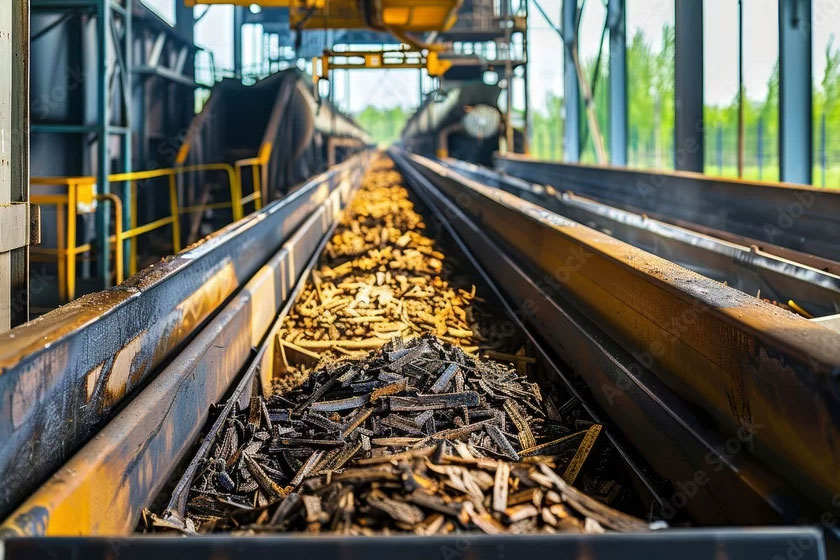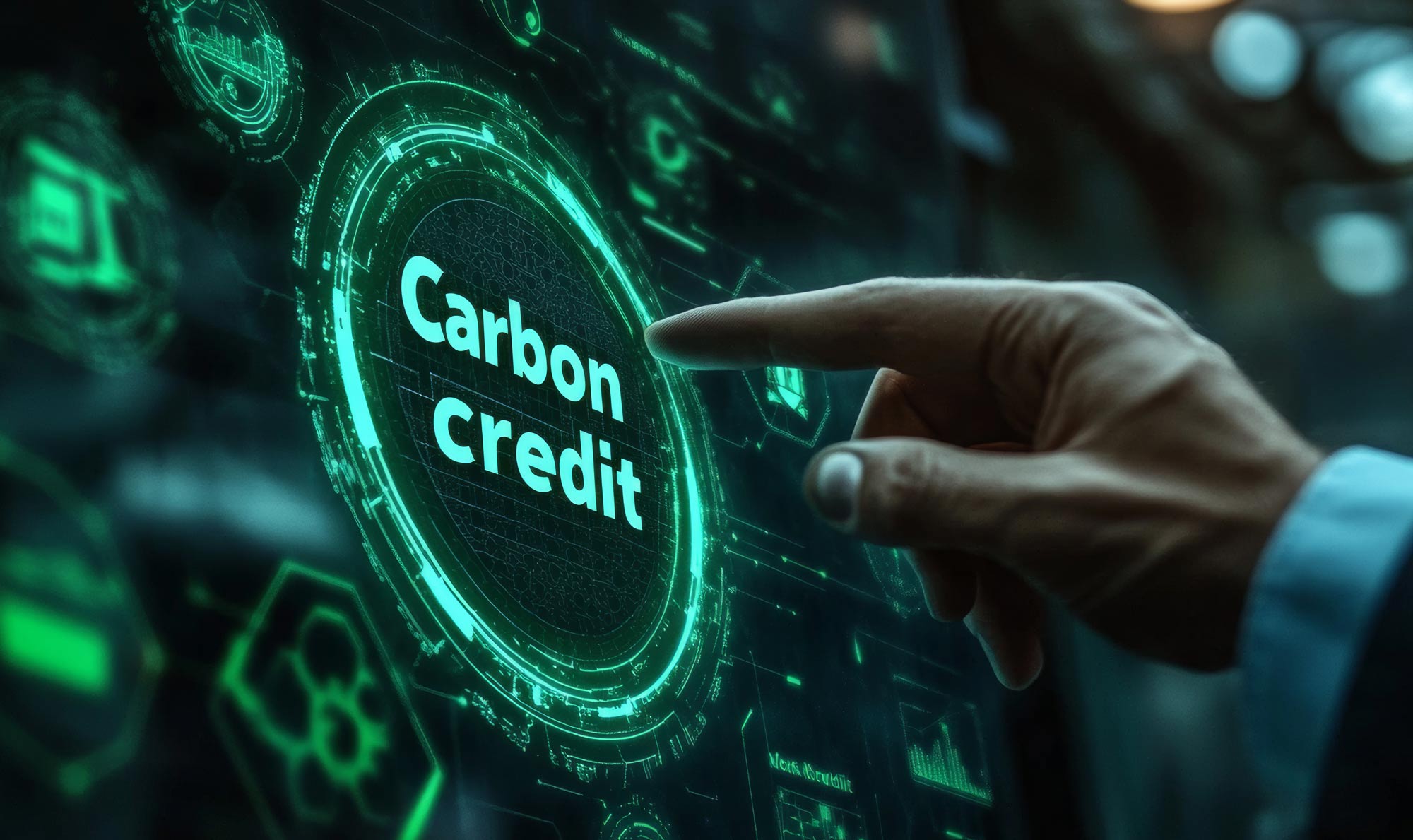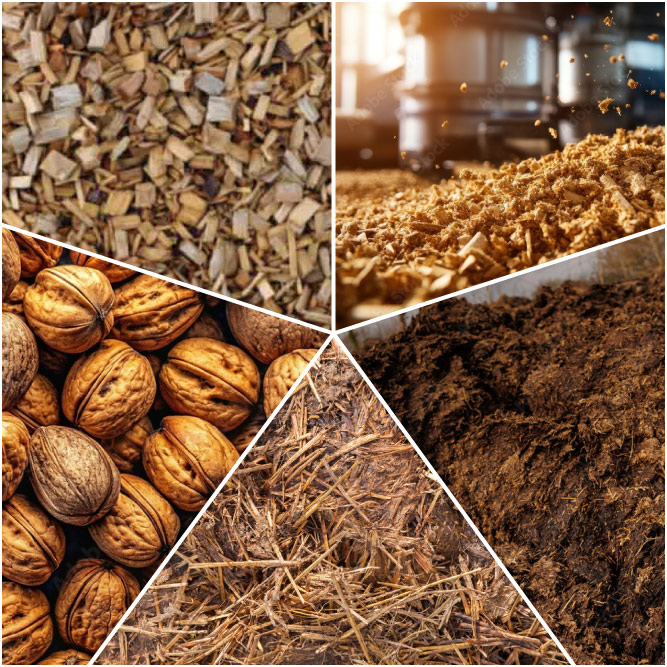바이오 숯 생산(열분해)
탄소배출권 수익
바이오 숯 생산 열분해 또는 가스화를 통한

바이오 숯은 목재, 견과류, 조개껍질, 깔짚, 거름, 짚, 줄기 등 다양한 농업용 원료로 만들 수 있으며, 모두 이 공정에 기여할 수 있습니다. 그 결과 전 세계적으로 수요가 증가하고 있는 유용하고 시장성 있는 제품이 탄생합니다.
열분해 또는 가스화를 통한 바이오 숯 생산은 현재 사용 가능한 가장 간단하고 측정 가능하며 비용 효율적인 탄소 포집 및 저장(CCS) 방법 중 두 가지입니다. 바이오 숯 생산은 350~900°C의 엄청난 양의 열을 발생시키는데, 이 열은 공정 내에서 재사용되지 않으면 환경으로 손실되는 경우가 많습니다. 이 열을 포집하여 사용하면 재사용하거나 사용 가능한 전기로 변환할 때 운영의 가치를 높일 수 있습니다. 운영 비용을 정상화하고 예측할 수 있습니다. 에너지가 열의 양에만 관련되고 그리드 유틸리티 가격에 의존하지 않기 때문에 운영에 사용되는 에너지 비용은 시간이 지남에 따라 감소하고 평준화되며 예측할 수 있습니다. 마지막으로, 현장에서 무탄소 전기를 생산하면 탄소 제거 크레딧(CDR)/탄소 배출권의 품질과 양을 늘릴 수 있습니다.
전기 생산 바이오 숯 공정에서
공기 중으로 손실되는 열을 포집하고 활용하여 전기를 생산할 수 있습니다. 이렇게 생산된 전기는 운영 비용을 절감하기 위해 사업장에 다시 투입하거나 다른 방식으로 활용할 수 있습니다. 바이오 숯 생산업체는 이렇게 배출되는 열을 포집함으로써 기존 바이오 숯 공정과 공급 원료에서 더 많은 가치를 얻을 수 있습니다. 일렉트라썸의 장치는 바이오 숯 열을 포집 및 활용한 다음, 그 에너지를 단위당 75~250kW의 전력으로 변환하는 매우 간단한 옵션을 제공합니다. 전기가 생산되면 기업 전반의 모든 애플리케이션에서 쉽게 사용할 수 있습니다.
우리의 전원 모듈75 는 유기 랭킨 사이클(ORC)과 특허받은 BITZER의 반밀폐형 트윈 스크류 익스팬더/발전기 조합을 사용하여 다양한 저급 폐열원에서 연료가 필요 없고 배기가스 배출이 없는 전력을 생산합니다. 당사의 열병합 발전 솔루션인 Power+ 발전기는 저온 열원에서 깨끗한 전기를 생성하도록 설계되었습니다. Power Power+ 발전기 열병합 발전(CHP) 장치로도 사용할 수 있어 전기와 함께 최대 85°C의 가용 열을 생산할 수 있습니다.
바이오 숯 폐열로 전기를 생산하는 이 응용 분야는 효율적이며 폐기물을 줄이는 기본 원칙을 활용합니다. 바이오 숯 처리가 고정된 위치의 시설에서 이루어지는 고정식 애플리케이션에 가장 적합합니다.

탄소 크레딧 생성 바이오 숯 공정에서
목재, 견과류, 조개껍질, 깔짚, 거름, 짚, 줄기와 같은 유기 공급원료는 탄소 함량이 60~80%로 높습니다. 재생 가능한 자원이고 비교적 빠르게 성장하기 때문에 탄소 포집을 위한 좋은 솔루션이며, 농부와 바이오 숯 생산자 모두에게 비즈니스 기회가 증가하고 있습니다.
제품으로서의 바이오 숯은 탄소 격리를 가능하게 하는 산업 규모의 상업적 솔루션입니다. 원료(예: 짚, 풀, 견과류 껍질, 거름 등)가 잘 알려져 있고 대량 생산이 가능하기 때문에 바이오숯 탄소배출권의 가치는 상당히 매력적인 경향이 있습니다. 이러한 경제 사이클은 충분히 견고하여 바이오 숯에서 탄소 배출권을 전문적으로 판매하는 브로커를 찾는 것이 어렵지 않습니다.
바이오 숯을 통한 탄소 제거의 한 가지 장점은 영구적이라는 점입니다. 식물에서 탄소를 포집하여 바이오 숯으로 가공하면 매우 안정적이고 내구성이 뛰어납니다. 선진국과 개발도상국 모두에서 무수히 많은 용도로 사용되고 있습니다.
바이오 숯에서 탄소 배출권을 받기 위한 기준은 일반적으로 다음과 같습니다:
- 지속 가능한 바이오매스 사용
- 바이오 숯 열분해 장비
- 바이오 숯을 판매할 시장
- 탄소배출권 관리 기관에 등록하거나 인증된 전문가가 프로세스를 관리할 수 있습니다.

대상 시장 바이오차 탄소 크레딧
“Demand for biochar carbon credits has doubled each of the last two years, with prices trading consistently over USD100/metric tonne of carbon dioxide equivalent. The latest modeling by MSCI Carbon Markets suggests demand for this project type could grow 20-fold over the next 10 years.”
-투자 자문가의 보고서 MSCI
바이오 숯은 시장에서 탄소 포집 및 저장, 즉 CCS라고 불리는 탄소 제거 기술로 취급됩니다. 정부의 의무화로 인해 CCS 시장이 계속 성장함에 따라 바이오 숯 탄소배출권 시장의 경제성도 자연스럽게 함께 커질 것입니다. 바이오 숯은 제품 자체로도 충분한 이점이 있습니다. 여기에 바이오 숯 생산자가 탄소배출권을 얻을 수 있다는 사실까지 더하면 비즈니스 모델은 더욱 매력적으로 변합니다.
MSCI에 따르면 바이오 숯 탄소배출권 가격은 $100~200 USD 범위에서 형성되어 있습니다. 다른 시장과 마찬가지로 가격은 변동될 수 있습니다. 바이오 숯의 한 가지 유용한 측면은 다양한 공급 원료로 생산할 수 있다는 점입니다. 생산자는 재정 및 생산 목표를 달성하기 위해 더 저렴한 공급 원료를 이용할 수 있습니다.
대상 시장 제품으로서의 바이오차
모든 바이오 숯 열분해 시스템에는 종종 700°C를 초과하는 고온 작동이 내재되어 있어 폐열 회수 발전의 이상적인 기회가 됩니다. 이는 문제의 공급 원료가 쌀겨, 사탕수수 섬유(사탕수수라고도 함) 또는 견과류 껍질과 같은 농업용 바이오매스이든, 목재, 벌목, 목재 또는 나무 서비스 "슬래시"와 같은 기타 바이오매스이든, 가금류 쓰레기 또는 돼지 및 소고기 폐사와 같은 대규모 동물 부지와 관련된 바이오고형물이든 상관없이 마찬가지입니다.
포춘 비즈니스 인사이트에 따르면 2024년 전 세계 바이오 숯 시장은 1조 4,763억 달러였으며, 2032년에는 1조 4,210억 달러로 성장할 것으로 예상됩니다. 재생 에너지 의무화는 탄소 포집 및 다운스트림 수익을 위한 확장 가능한 시장으로 바이오 숯을 목표로 삼고 있습니다. 바이오 숯은 그 자체로 사용하거나 조경 제품의 원료로 사용할 수 있습니다.
제품으로서의 바이오 숯은 이미 선진국과 개발도상국 경제에 광범위하게 적용되고 있습니다.
- 토양 건강: 농업, 정원, 조경, 잔디, 나무, 원예, 퇴비, 퇴비화
- 환경환경 개선, 침식 제어, 습지, 악취 저감
- 물: 빗물 여과, 수처리, 기능성 문자, 3D 에어로젤
- 임업: 산불 연료 감소, 재조림, 재배지, 재조림, 재식생
- 탄소탄소 격리, 탄소 배출권, 재생 에너지 상쇄
출처: 미국 바이오차 이니셔티브
폐열 회수 발전 추가
를 열분해 애플리케이션에 적용하면 다음과 같은 다양한 이점이 있습니다.
탄소 배출권 가치
오늘날 거의 모든 바이오 숯 사업자는 자발적 탄소 시장(VCM)을 통해 탄소 제거와 관련된 재정적 기회, 즉 CDR 크레딧을 활용하려고 합니다. 폐열 회수를 통한 에너지 생산은 상품의 탄소 집약도 감소를 통해 바이오 숯 제품의 가치를 높일 수 있는 기회입니다.
규정 준수
폐열 발전은 탄소 배출세를 줄이는 데 도움이 되며, EU 탄소 제거 프레임워크(ECRF)와 같은 향후 규정 준수 요건을 충족하는 데도 유리한 위치에 있습니다.
첨단 열 활용
가장 공신력 있는 탄소배출권 인증 기관 중 다수는 "첨단 기술" 열 운영으로 인정받기 위해 폐열 활용을 권장하거나 요구합니다. ORC 발전을 이용한 폐열 발전은 사업장의 전력 수요를 충족하는 동시에 배출 발자국을 줄임으로써 이러한 요구를 충족합니다.
운영 비용 절감
열분해 작동 중 탄소 기반 전원(예: 도시 전력망의 전기)의 필요성을 줄이거나 거의 없애고 이를 무공해 발전으로 대체함으로써 전체 시스템 운영 비용을 절감할 수 있습니다.
바이오 숯 가치 증가
가장 탄소 친화적인 방식으로 제조된 바이오 숯은 고부가가치 '오프 테이커'들이 가장 친환경적인 인증을 받은 공급업체로부터 바이오 숯을 공급받으려 하기 때문에 오픈 마켓에서 더욱 매력적일 것입니다. 따라서 폐열 발전을 통합한 열분해 시스템에서 생산된 바이오숯의 수요가 증가할 것입니다.





